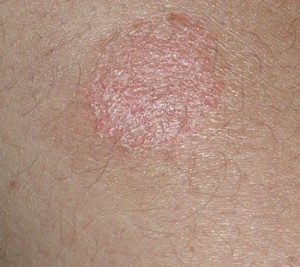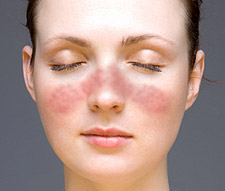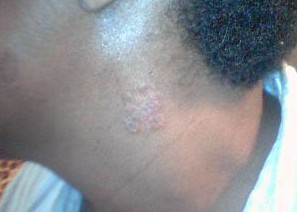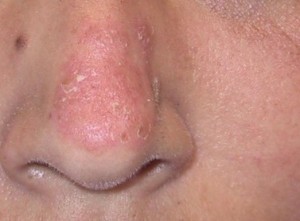Discoid rash is a form of Lupus which is a chronic and inflammatory autoimmune disease wherein the immune system tends to attack the healthy cells and tissues in one’s own body.
Unlike lupus, discoid rash or discoid lupus erythematosus or DLE tends to affect only the skin. However, one has to undergo a number of tests to determine whether one has a case of only discoid rash or a case of full blown lupus or systemic lupus erythematosus (SLE).
The diagnosis of discoid rash or lupus is often difficult due to the fact that the signs and symptoms of lupus generally tend to match the symptoms of various ailments and illnesses that afflict the body. Lupus is a very dangerous disease as it leads to inflammation and damage of several body systems such as the brain, the kidneys, the lungs, the heart as well as the blood vessels.
Symptoms of discoid lupus rash
The signs and symptoms of discoid rash tend to point towards an inflammation of the skin. However, in order to diagnose discoid rash, one has to eliminate other symptoms that accompany lupus. This elimination can be done by checking for all the signs and symptoms that are listed below:
- Discoid rash results in the formation of skin rashes, particularly on the neck, the scalp and the face. It is different from the butterfly or malar rash that also occurs on the face and is another symptom of lupus.
- The butterfly rash occurs on the face, covers both the cheeks as well as the nasal bridge and tends to look like the wings of a butterfly. They are non itchy and distinct with sharp borders.
- The discoid rash on the other hand tends to be thick and increasingly itchy. They are also well defined, scaly, reddish and on rare occasions grainy in nature. The discoid rash may worsen to form lesions. Upon healing discoid rashes tend to leave pigmented marks and scars on the affected areas.
It is important to know the other symptoms that accompany discoid rash as well as lupus to get a proper diagnosis. Some of these symptoms can be organ specific and are as follows:
- Increased tendency to have fever
- Memory loss of forgetfulness as well as increased confusion or disorientation
- Excessive weakness, tiredness or fatigue
- Unintended or inexplicable abnormalities in weight that results in weight gain or loss of weight
- Development or aggravation of lesions due to exposure to sun
- Hair loss
- There may be inflammation, pain or swelling of the joints
- Chest pain
- Raynaud ’s phenomenon or the tendency of the body extremities like the fingers and the toes to turn white or blue during emotional stress or exposure to cold weather
- Dry eyes
- Shortness of breath
- The mouth may develop sores
- Increased fragility of the skin that causes easy bruising
- Psychological abnormalities like anxiety or depression
- Kidney damage that can lead to failure of the kidneys as well as a fatality. Inflammation of the kidneys can lead to swollen legs, global itching, vomiting and nausea
- Brain tissues damage and inflammation can lead to hallucinations, cognitive defects, dizziness, changes in behavior, seizures, strokes and other abnormalities in brain function
- Lung tissue damage can lead to inflammation of the inner linings of the chest cavity as well as breathing irregularities and problems
- Blood vessels inflammation can result in easy bleeding and bruising, problems in blood clotting and other blood disorders such as anemia
- Cardiac membranes, tissues and arteries inflammation can result in heart failure as well as other cardiovascular diseases
- Inflammation and damage to other body parts and tissues can lead to deterioration of the bone tissues, a weakened immune system, increased risk of miscarriages and other pregnancy problems as well as increased risk of infections and cancer
Tests and diagnosis of discoid rash
The tests listed below help to eliminate the symptoms and assist in the diagnosis of discoid rash or the presence of lupus:
- Blood and urine tests that verify the complete blood count, erythrocyte sedimentation rate, the level of protein or blood in urine as well as assessment of the liver and the kidneys
- An antinuclear antibody test or an ANA test to help determine the presence of an overactive immune system
- Imaging tests such as chest X-ray, echocardiogram and a biopsy that verify the extent of organ damage
Causes of discoid rash
Discoid rash has no known causative factors. However, studies suggest that a genetic predisposition to discoid rash may be triggered by several factors such as:
- Excessive exposure to sunlight
- Being of an American African, Hispanic or Asian descent
- Being a woman
- Intake of certain medications
- Viral infections that include the Epstein-Barr virus
- Excessive smoking or exposure to chemicals such as silica or mercury
- Presence of other skin diseases such as Bloom Syndrome, dermatomyositis, acne rosacea, pellagra and seborrheic dermatitis
Treatment of discoid lupus rash
Once it has been determined that lupus is present in the form of discoid rash only, then the below mentioned treatment methods can be followed:
- NSAIDs or nonsteroidal anti-inflammatory drugs that may be prescribed to treat swelling, pain and fever that is associated with discoid rash
- An overactive immune system can be suppressed by immunosuppressant drugs such as leflunomide, azathioprine, cyclophosphamide or methotrexate
- Use of sun block as well avoidance of excessive exposure to sunlight can help treat discoid rash as well as prevent relapses
Discoid Lupus Pictures



